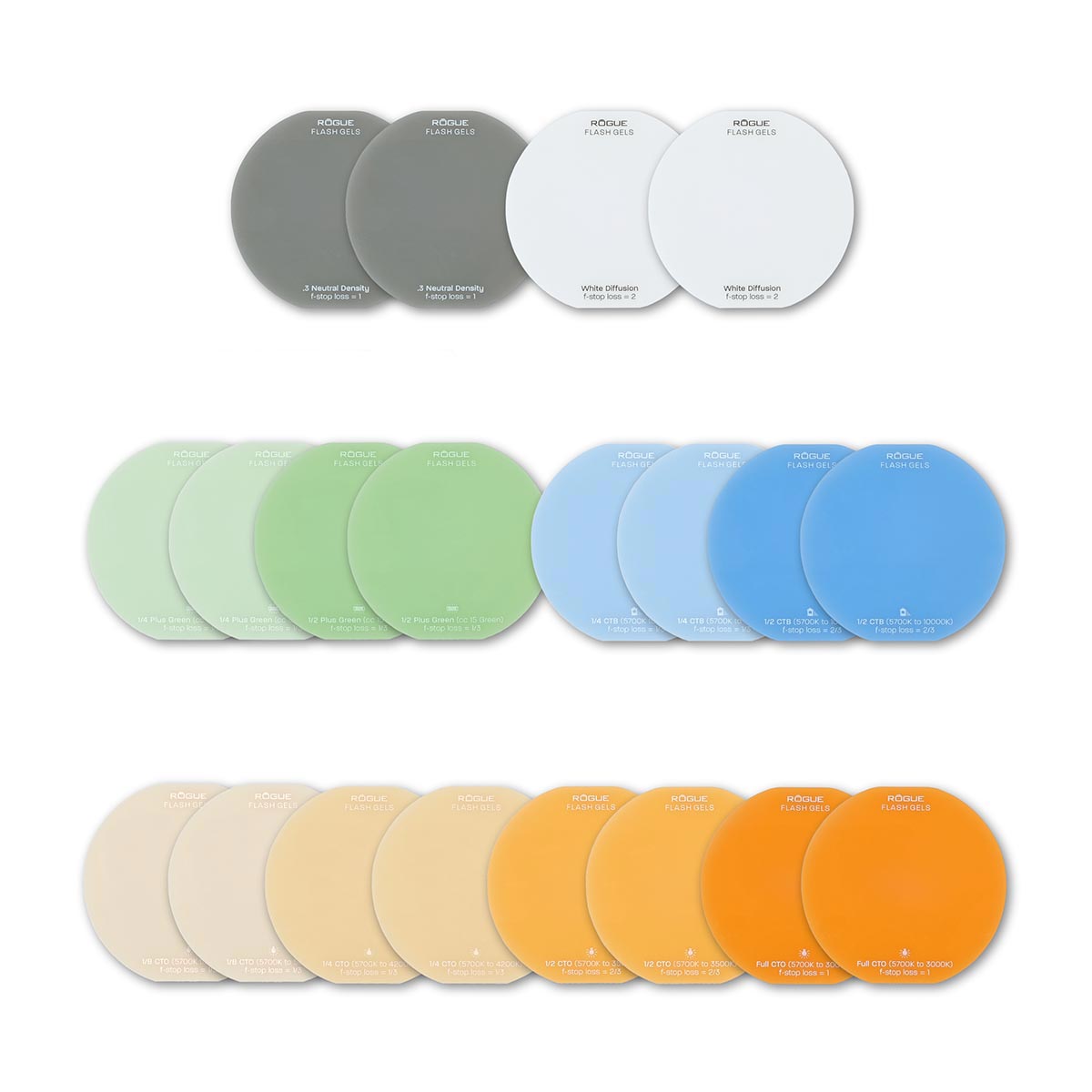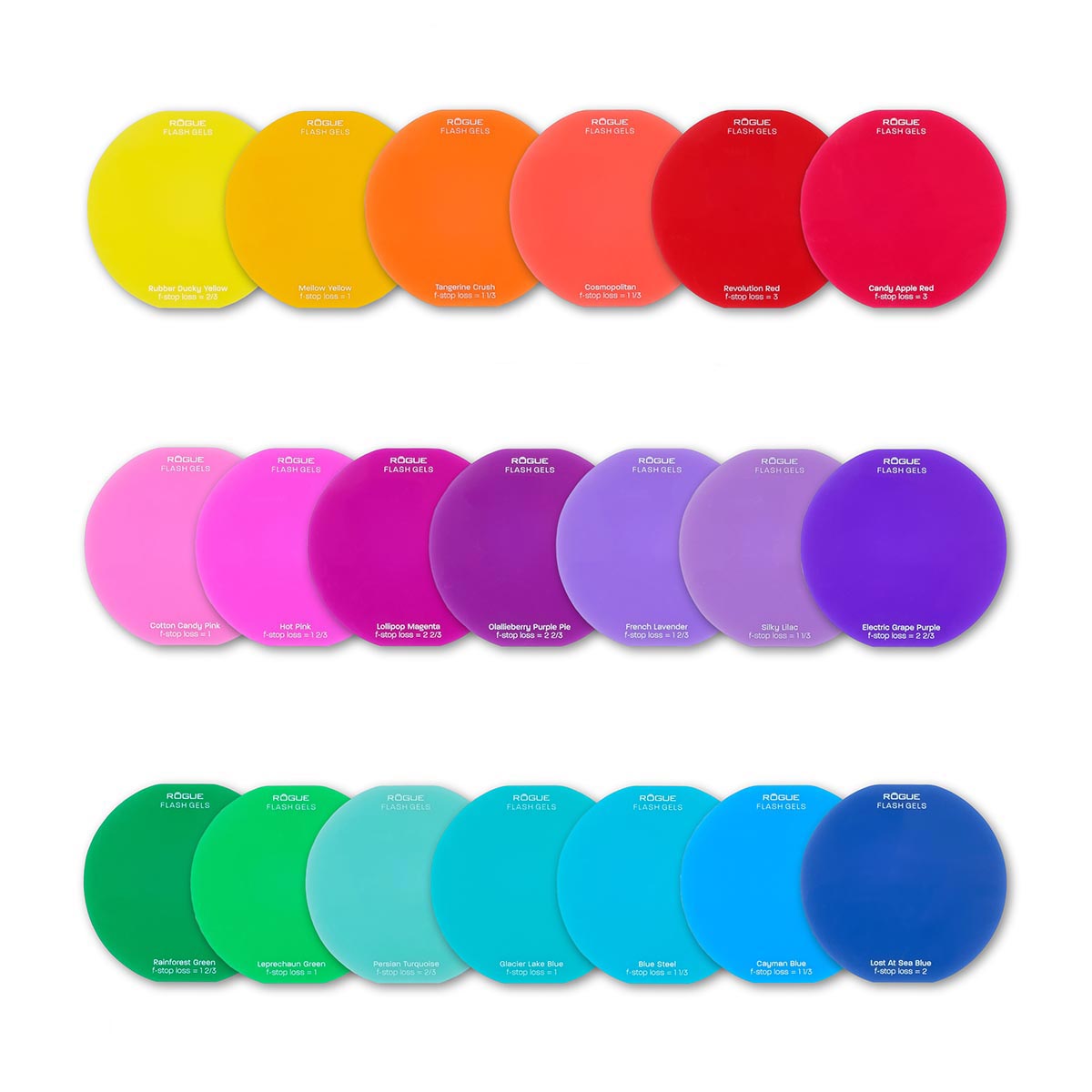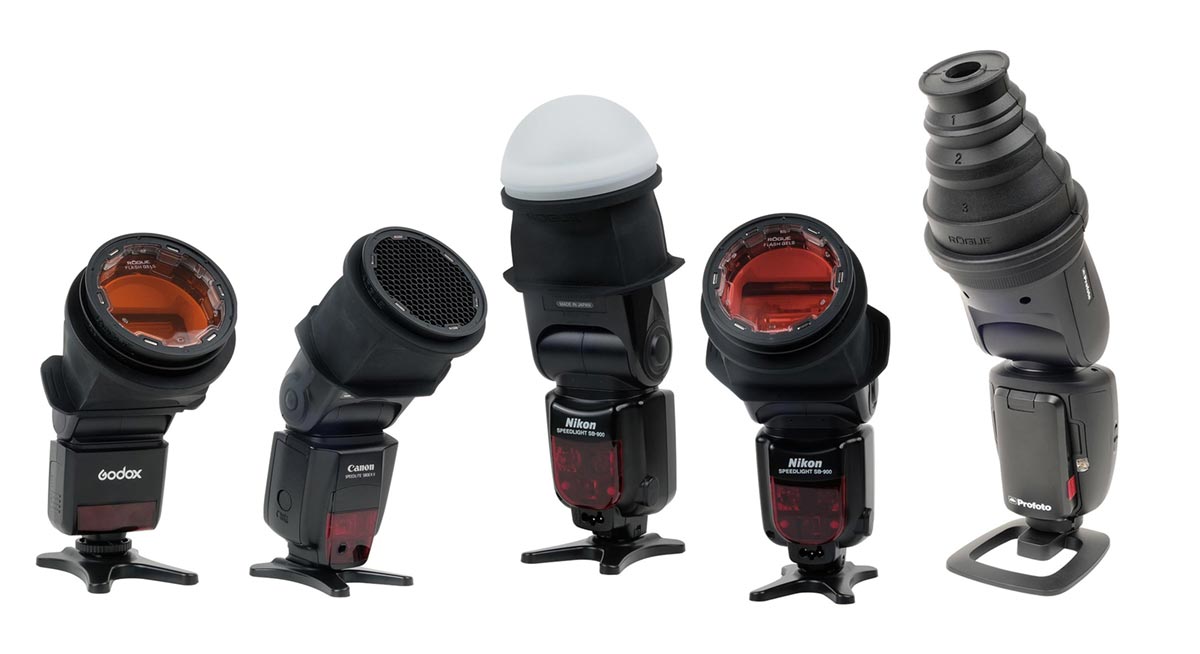Magnetic Attraction
Rogue Round Flash Magnetic Modifiers provide an array of easy-to-deploy tools for your flash.
• February 2023 issue
Rogue light modifier systems from Expo Imaging have been around long enough to provide a comprehensive array of options to small-flash users. Soft boxes, snoots, grids, gels—if you want to color or shape the quality of your light, the systems provide an adventurous photographer with a wide-ranging set of practical, easy-to-deploy tools.
The Round Flash Magnetic Modifiers are designed for 3.5-inch flash models such as the Godox V1 or AD100 Pro monolight (with round adapter), the Godox Wistro HR200 head for the AD200 Pro, and the Westcott FJ80. For the Profoto A1, A1X, or A10 flashes, which have a slightly smaller diameter front end, you will need the Rogue PF adapter. If you use rectangular-faced hot shoe mount flashes, you’ll need the Rogue Flash standard adapter for lights like Nikon SB-910 Speedlight, Canon Speedlites 580EX and 600EX, Sony HVF-F45 and F60, and Godox TT350. Likewise, you’ll need the Rogue Flash small adapter for smaller flashes such as the Canon Speedlite 430EX, Sony HVM-F32M, and Nikon SB-600 Speedlight.
What makes the new system valuable is not just the range of modifiers or that they are well made but how they attach to the lights and adapters. Six neodymium magnets embedded in the solid polycarbonate frames connect directly to the magnets in the lights and the PF and Rogue Flash adapters. This approach eliminates the need for clunky mounts, rubber bands, or gaffer tape. The magnets also allow you to stack modifiers.
For this review, I used the modifiers on Adorama Flashpoint versions of the Godox V1 flash and a pair of AD200Pro monolights with Godox HR200 heads.

The Ultimate Portrait Collection gels

The Color Correction Collection gels
There are two sets of components in this Rogue system: hardware and gels. The hardware components are a diffuser dome, a flash gel lens, a collapsible silicone snoot with four positions, and a 45-degree grid.
The diffusion dome is collapsible and made of translucent white silicone. It packs nearly flat, making it easy to carry. In use it looks like a mushroom cap, radiating light in a hemispheric pattern. Real estate photographers will find this useful for lighting small rooms.
The gel lens is available separately as well. While you can use it with the other modifiers, it isn’t needed with the dome and snoot.
There are two options for narrowing a beam of light: snoot and grid. Like the diffusion dome, the snoot is made of flexible silicone; however, it’s opaque black instead of translucent white. The snoot weighs a scant 2.8 ounces and is only 1.5 inches tall when collapsed. It pops out into four positions, progressively narrowing the beam. A single grid reduces the beam angle to 45 degrees, a stack of two grids reduces the beam angle to 25 degrees, and a stack of three drops the beam angle to 16 degrees. In theory, you can stack as many grids as you like, but there’s a practical limit. Because each grid reduces the amount of light transmitted, by the time you have a stack of three or more grids, the amount of light produced may not be enough for your desired aperture and ISO combination.
When it comes to gels, there are two sets: the Ultimate Portrait Collection and the Color Correction Collection. Each contains 20 durable polyester film gels. The gel collections are curated, designed, and created by Expo Imaging and feature gel material from Lee Filters UK, a venerable British company that has been making lighting gels and camera filters for cinema, television, and theatrical productions for over half a century. The gels are thin enough to be combined to produce unique colors if desired.
The Ultimate Portrait Collection colors range from subtle to deeply saturated. Rogue gives these gels funky, evocative names like Silky Lilac, Electric Grape, Blue Steel, and Olallieberry Purple Pie, and developed the color correction conversion values, giving you the baseline technical information needed when planning a shot.
The Color Correction set contains paired sets of gels: two pairs (half and full strength) of Plus Green (for balancing a flash’s native daylight color balance with ambient fluorescent light), two pairs (half and full strength) of CTB to raise the effective color temperature of the light, and four pairs of warming gels (from 1/8 to full strength) so you can balance your flash to ambient tungsten lighting. There are also pairs of neutral density and white diffusion gels.
What I like about the system is a quartet of assets: ease of use, comprehensive scope, a modular design that lets you build the system you want, and an affordable price. The Rogue Round Flash Kit is $99.95, $129.95 with a standard or small flash adapter. The gel kit collections are $34.95 each, and the dome, snoot, and grids range from $29.95 to $39.95.
Ellis Vener is commercial and portrait photographer based in Atlanta, Georgia and a contributing editor.

